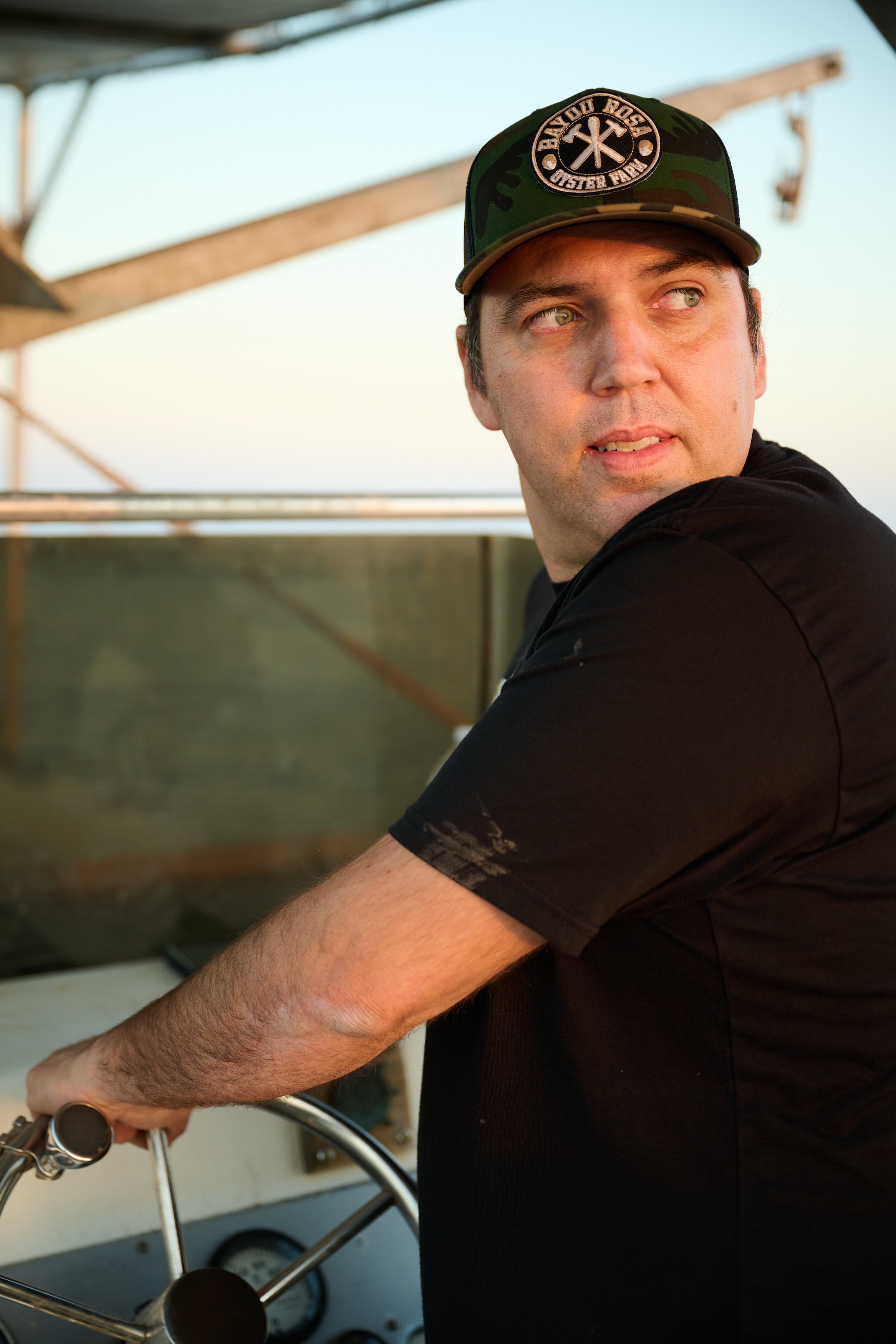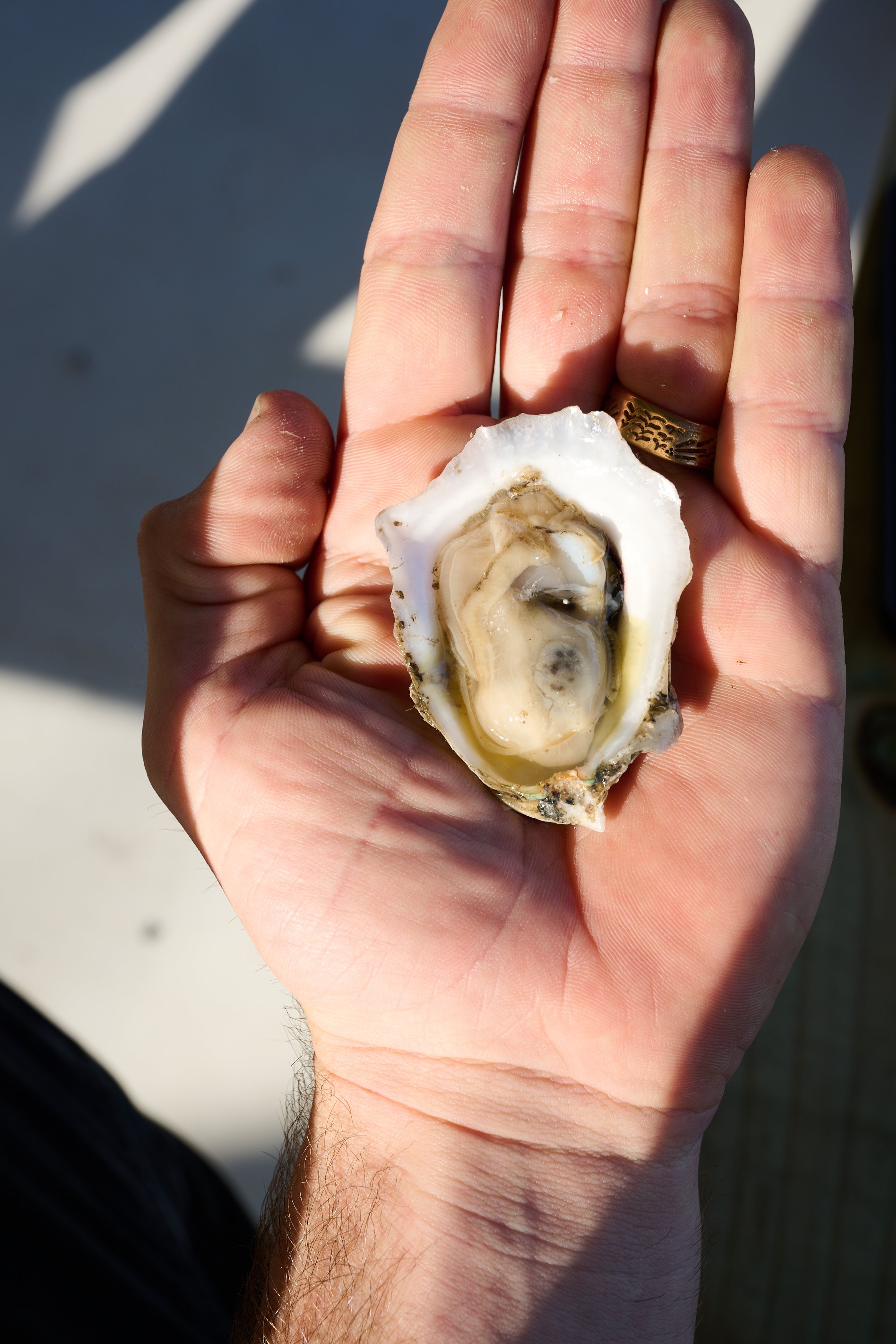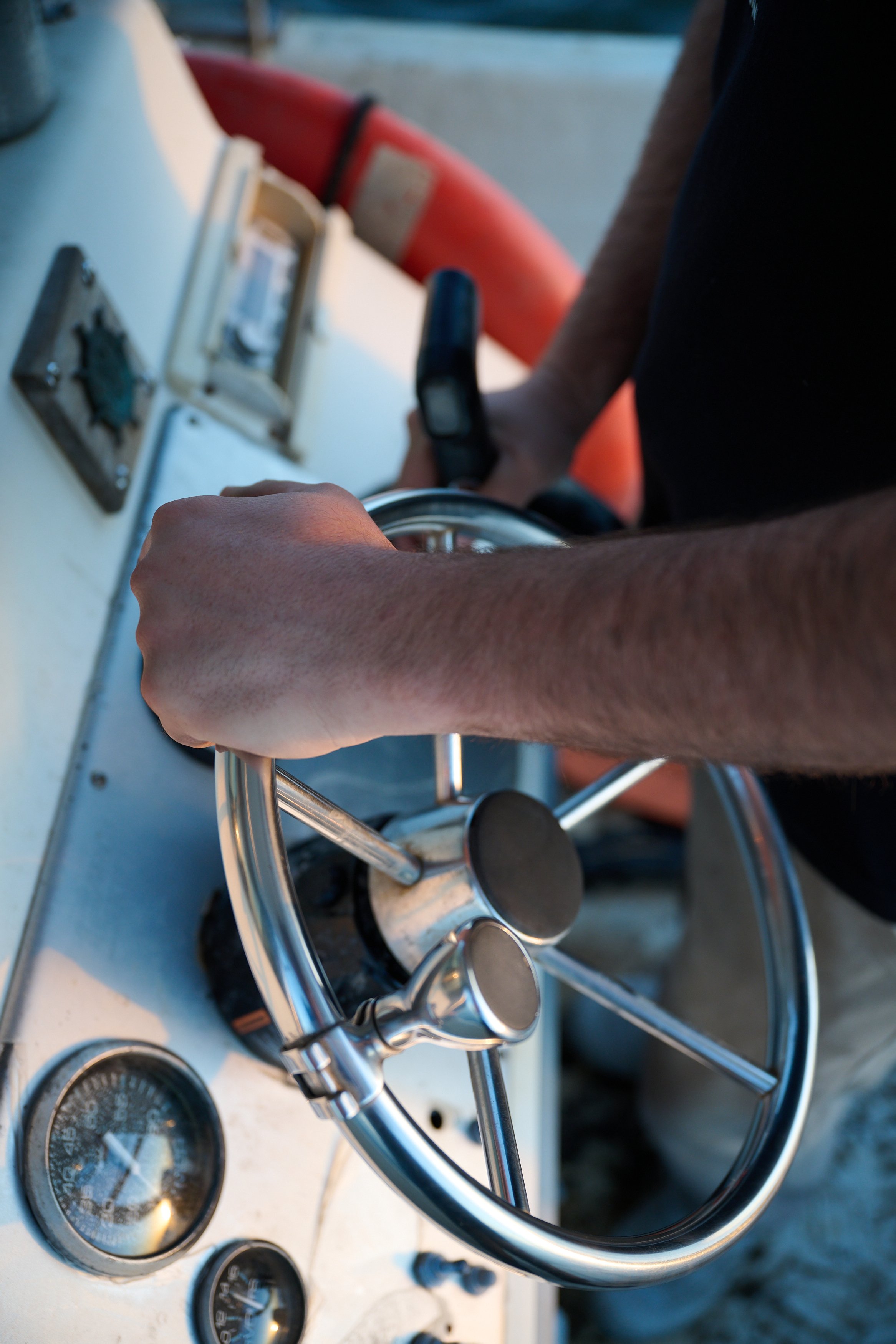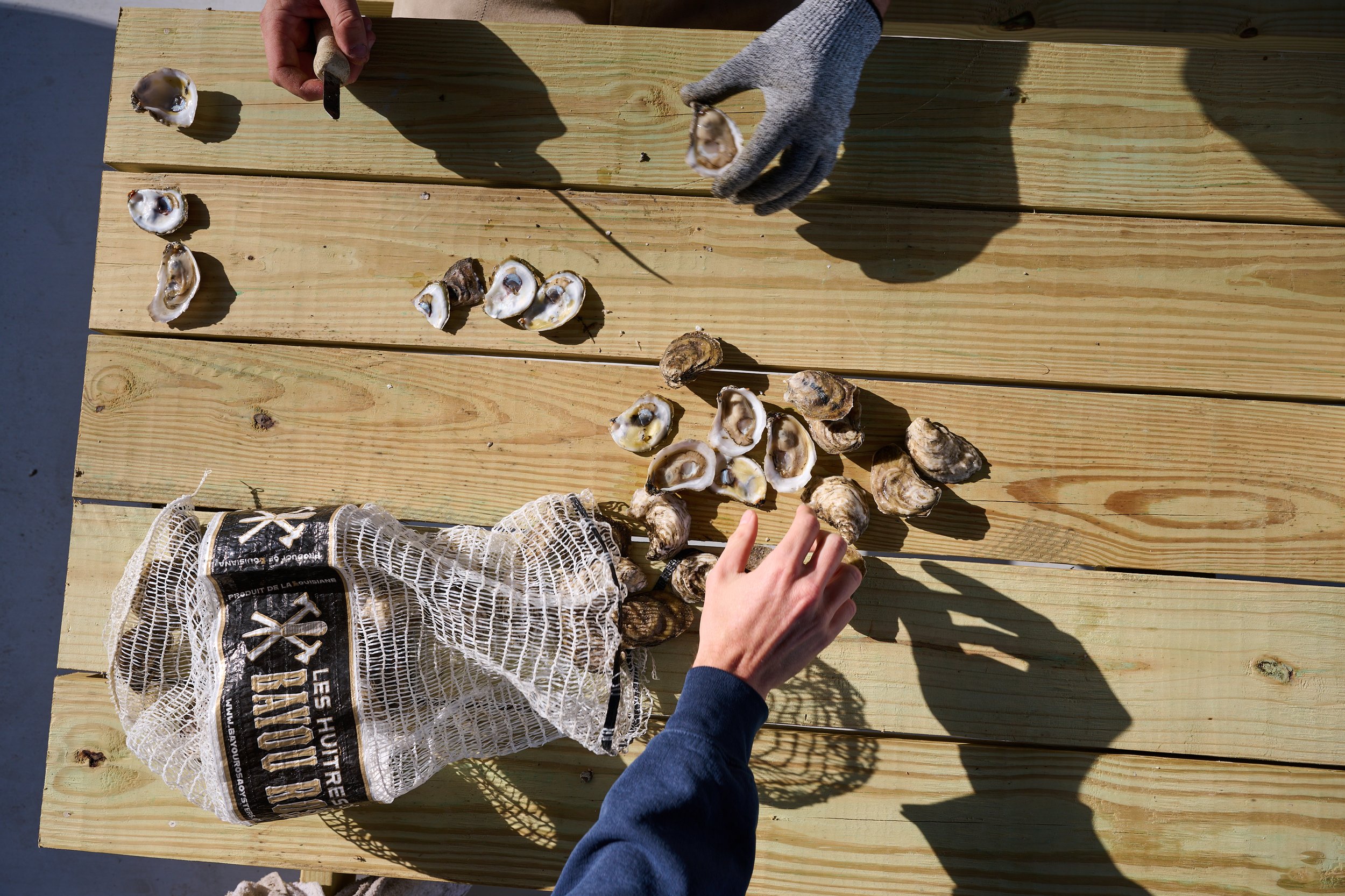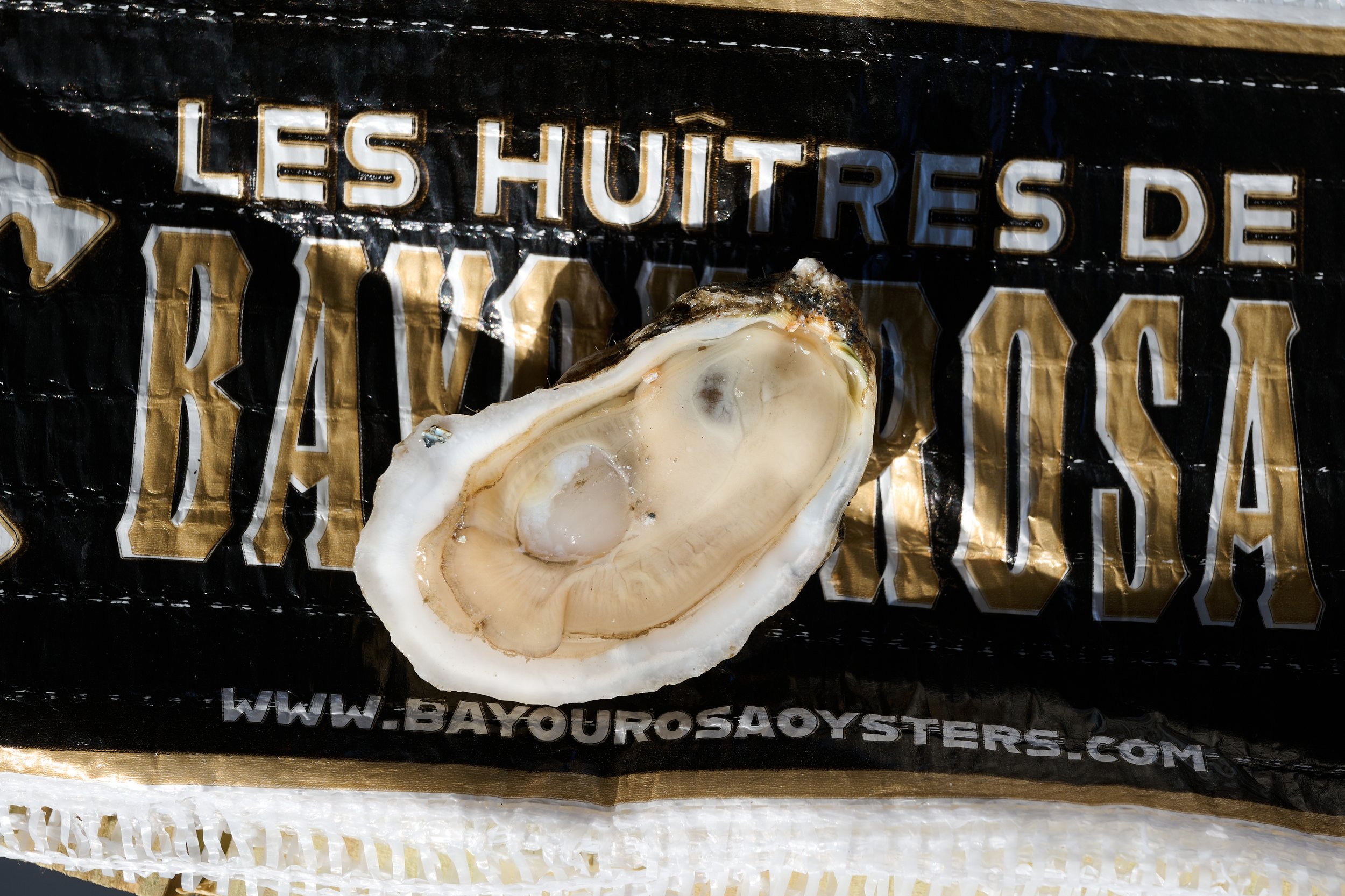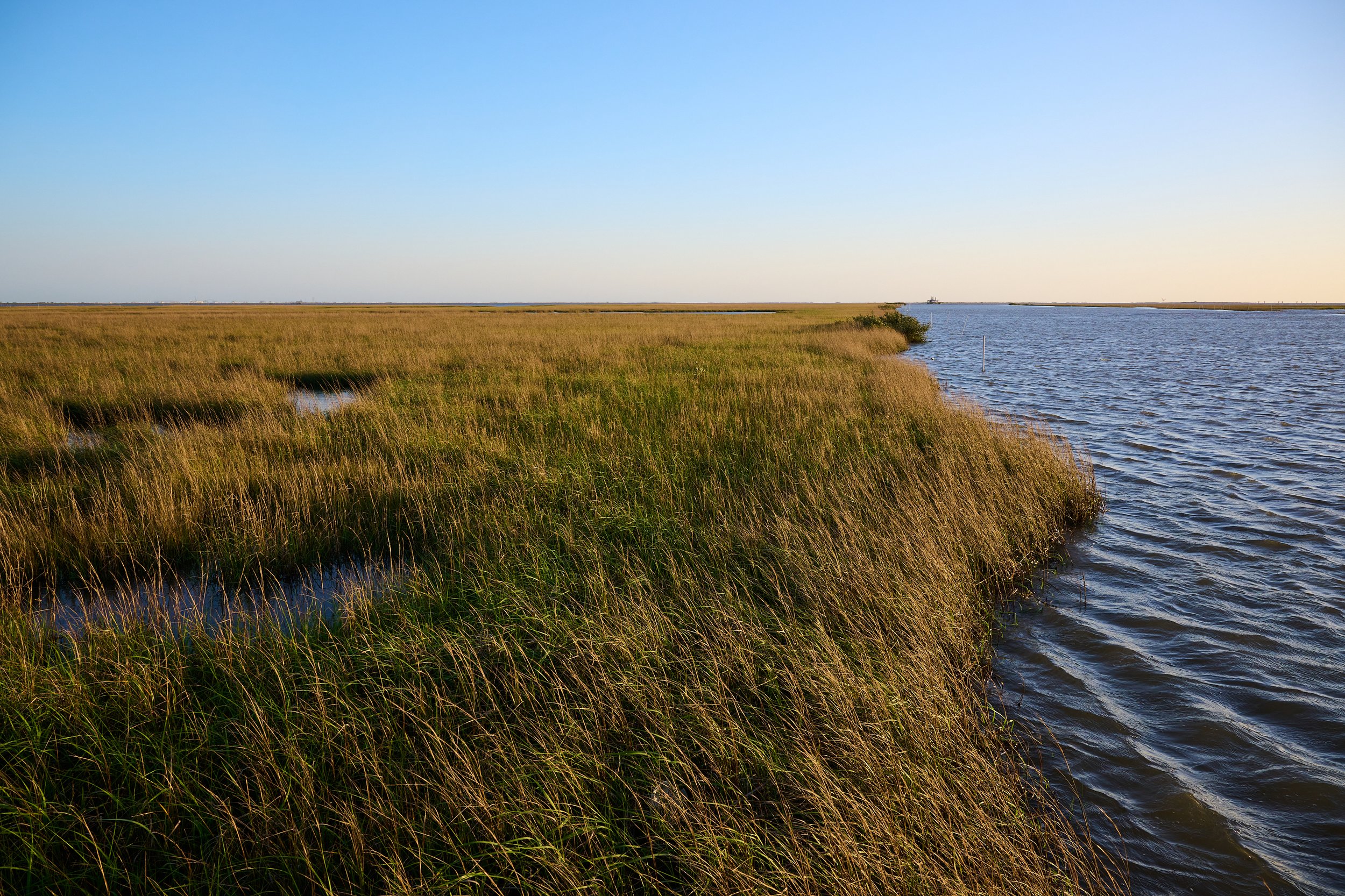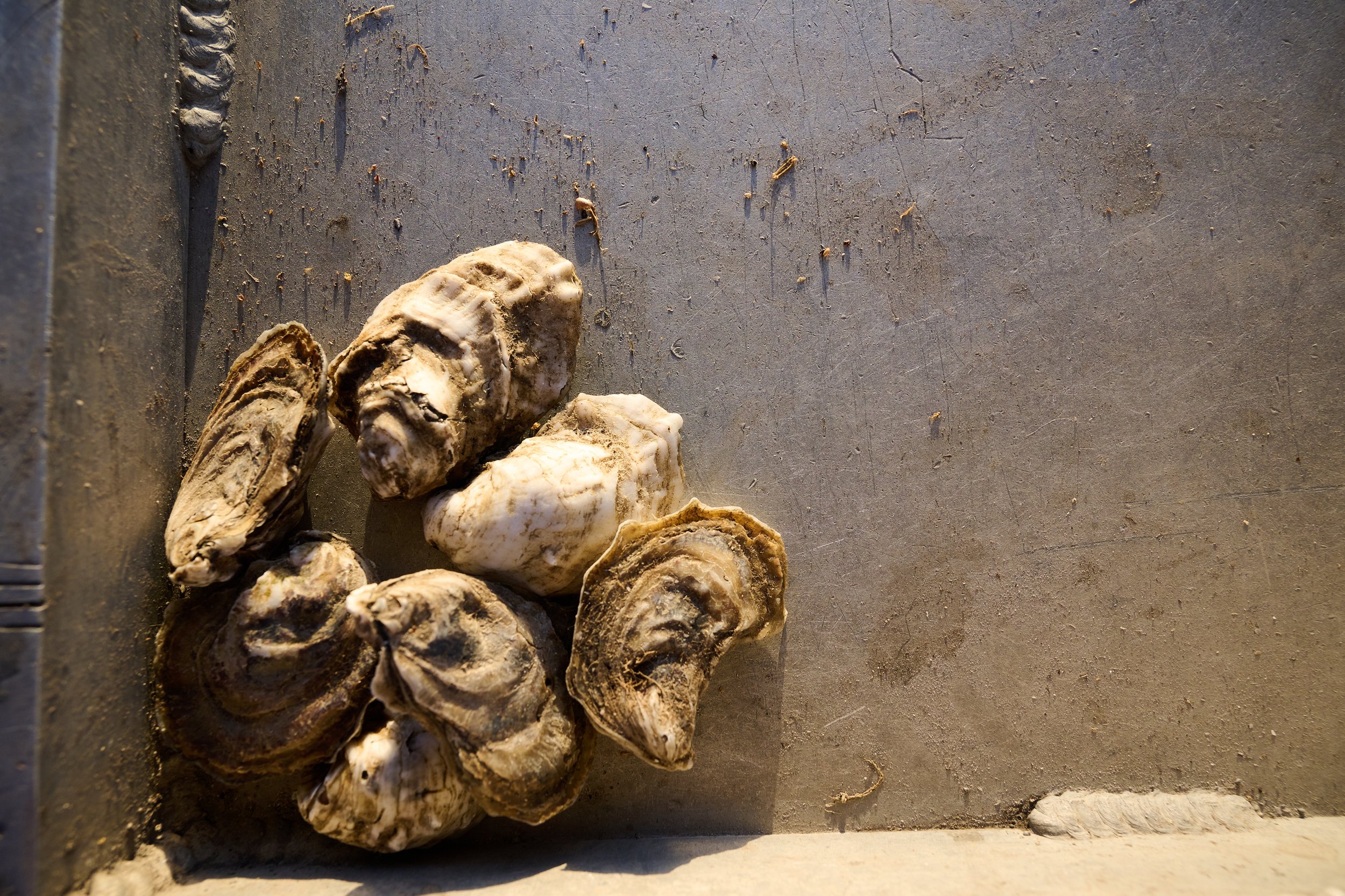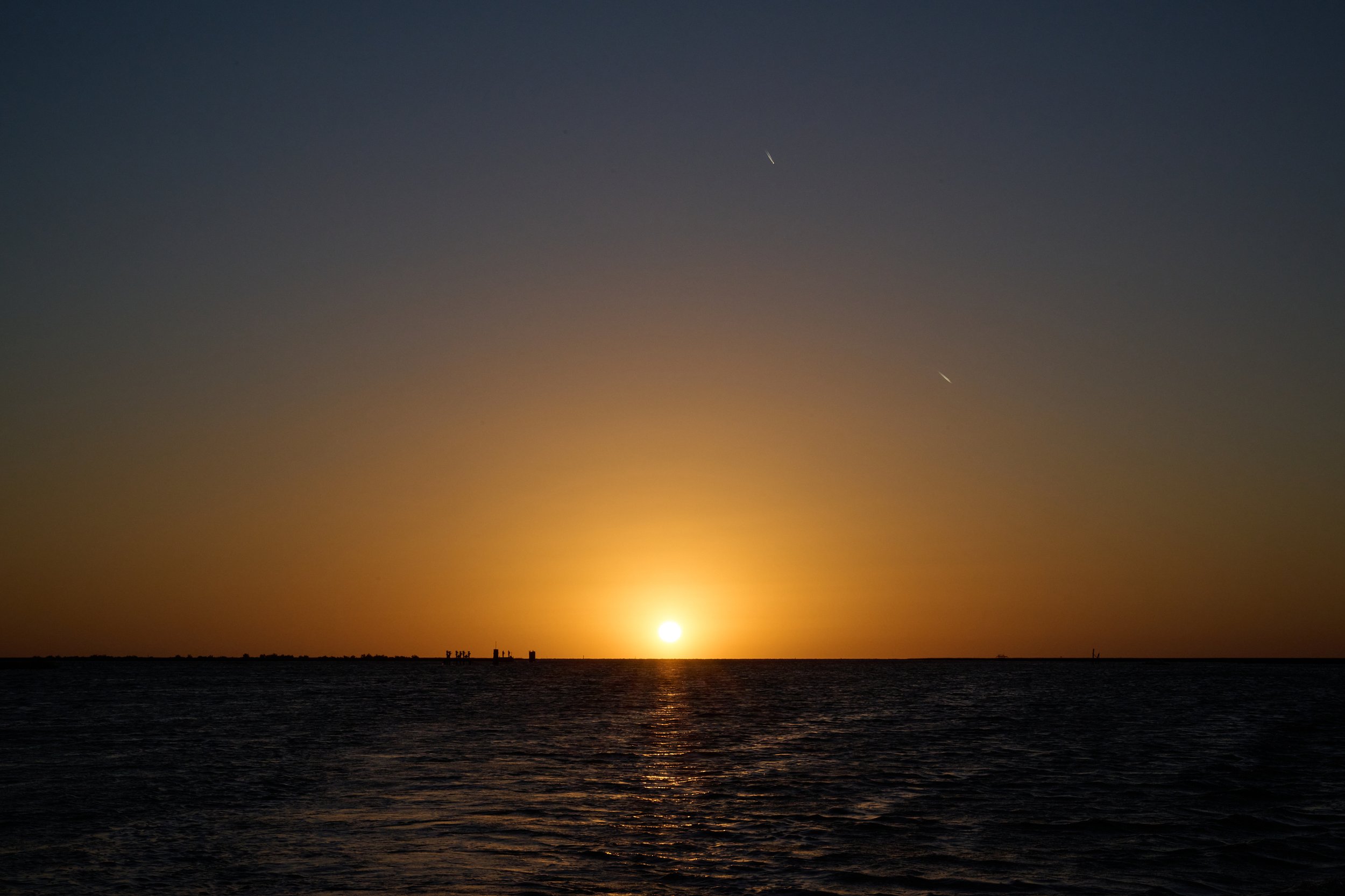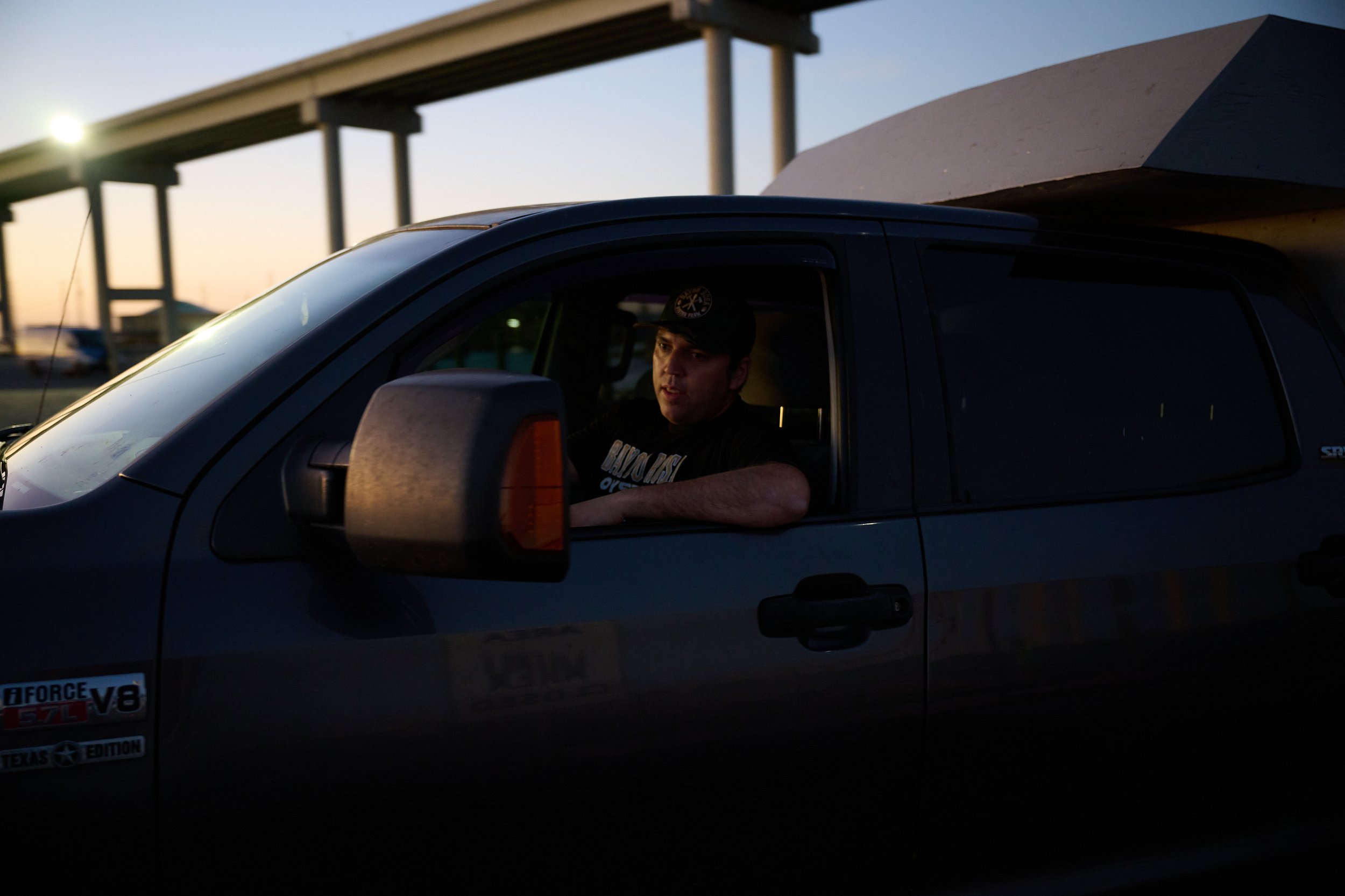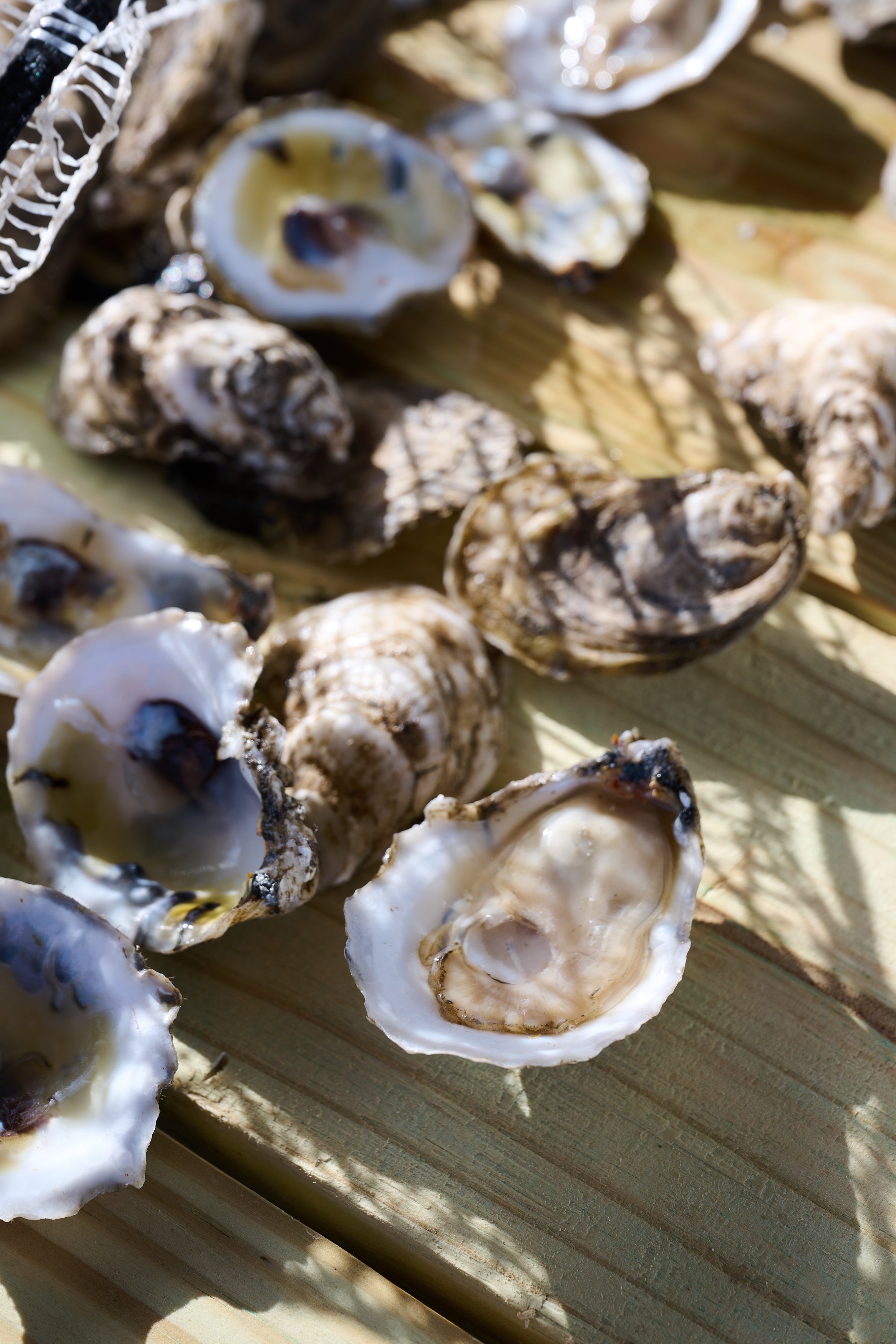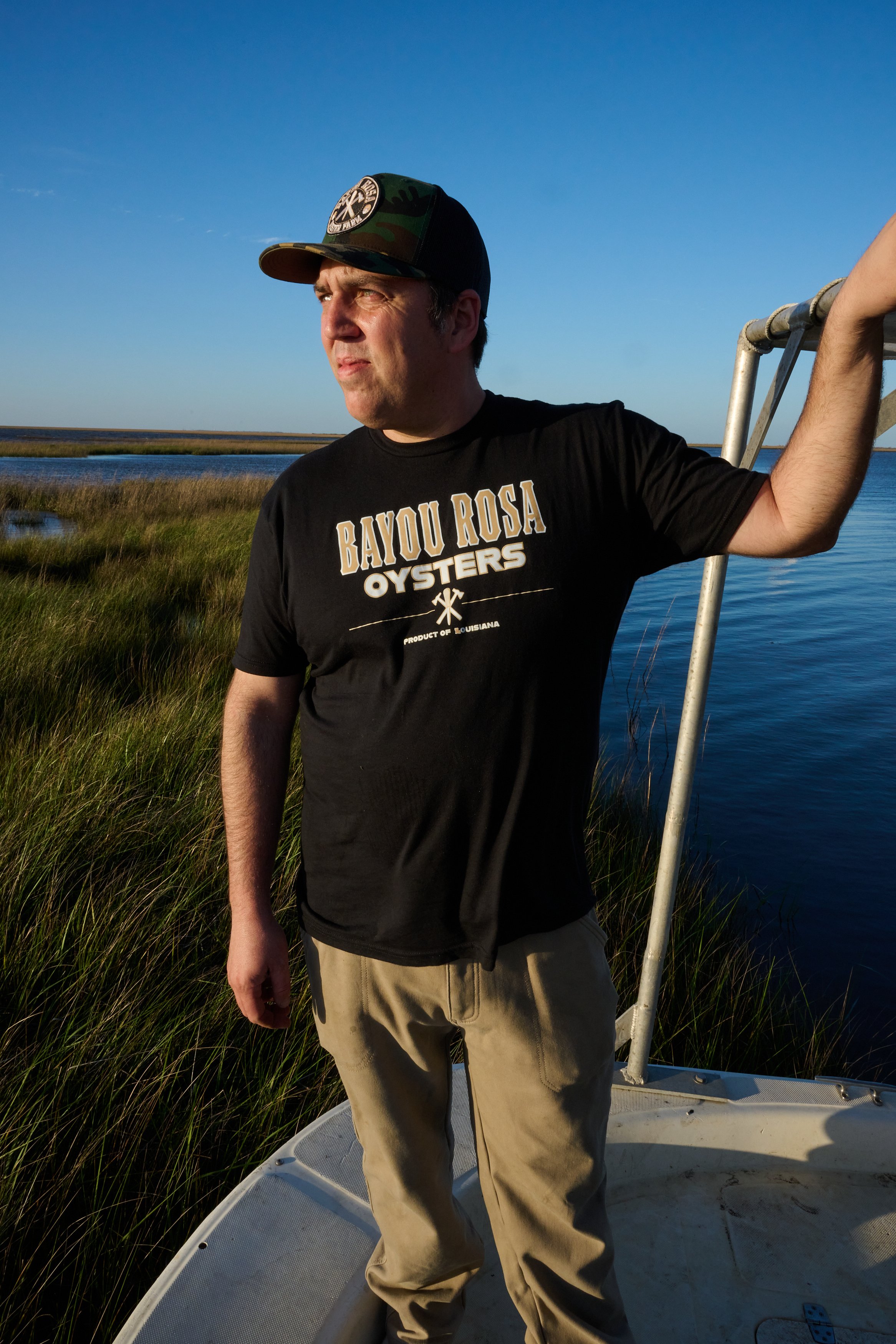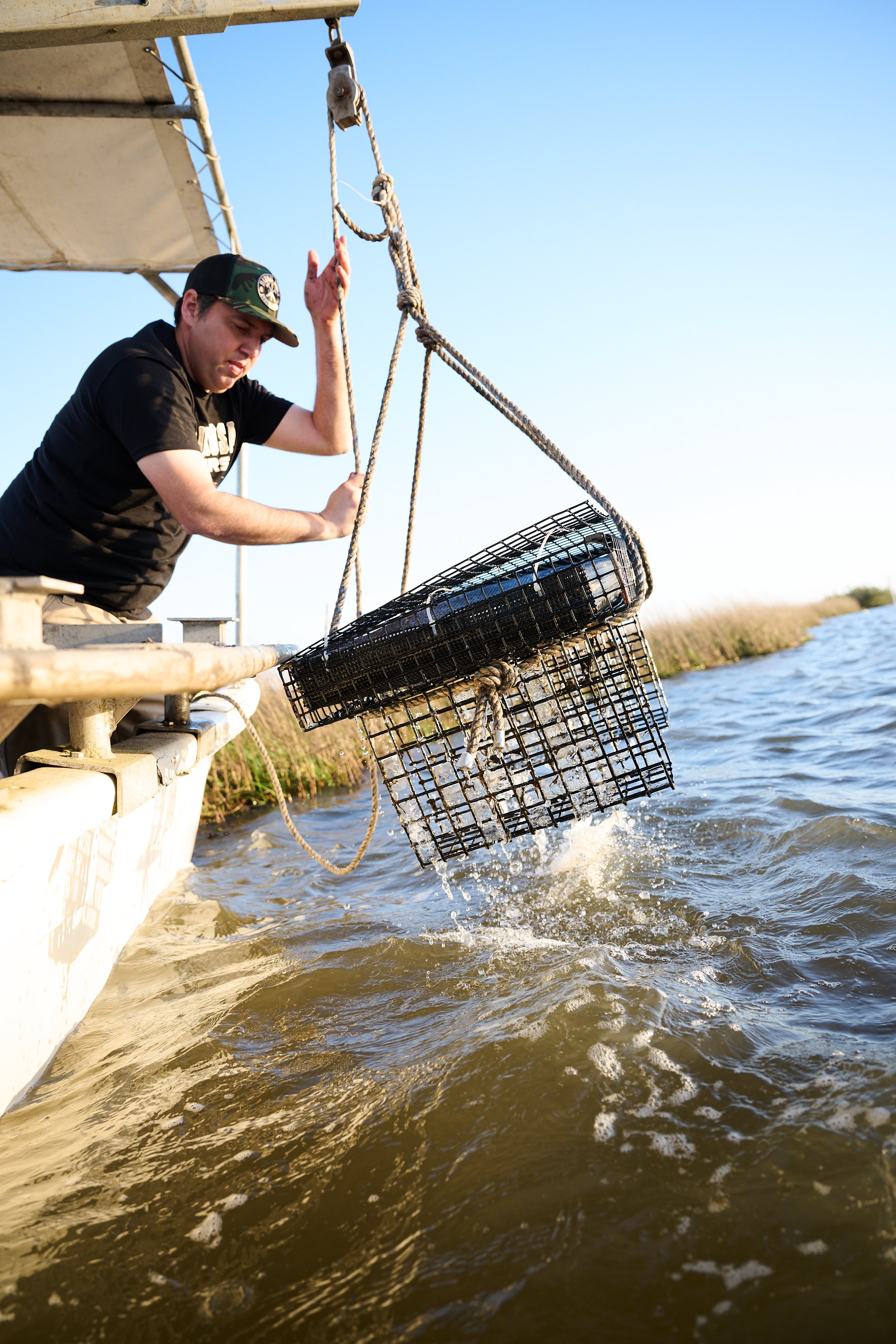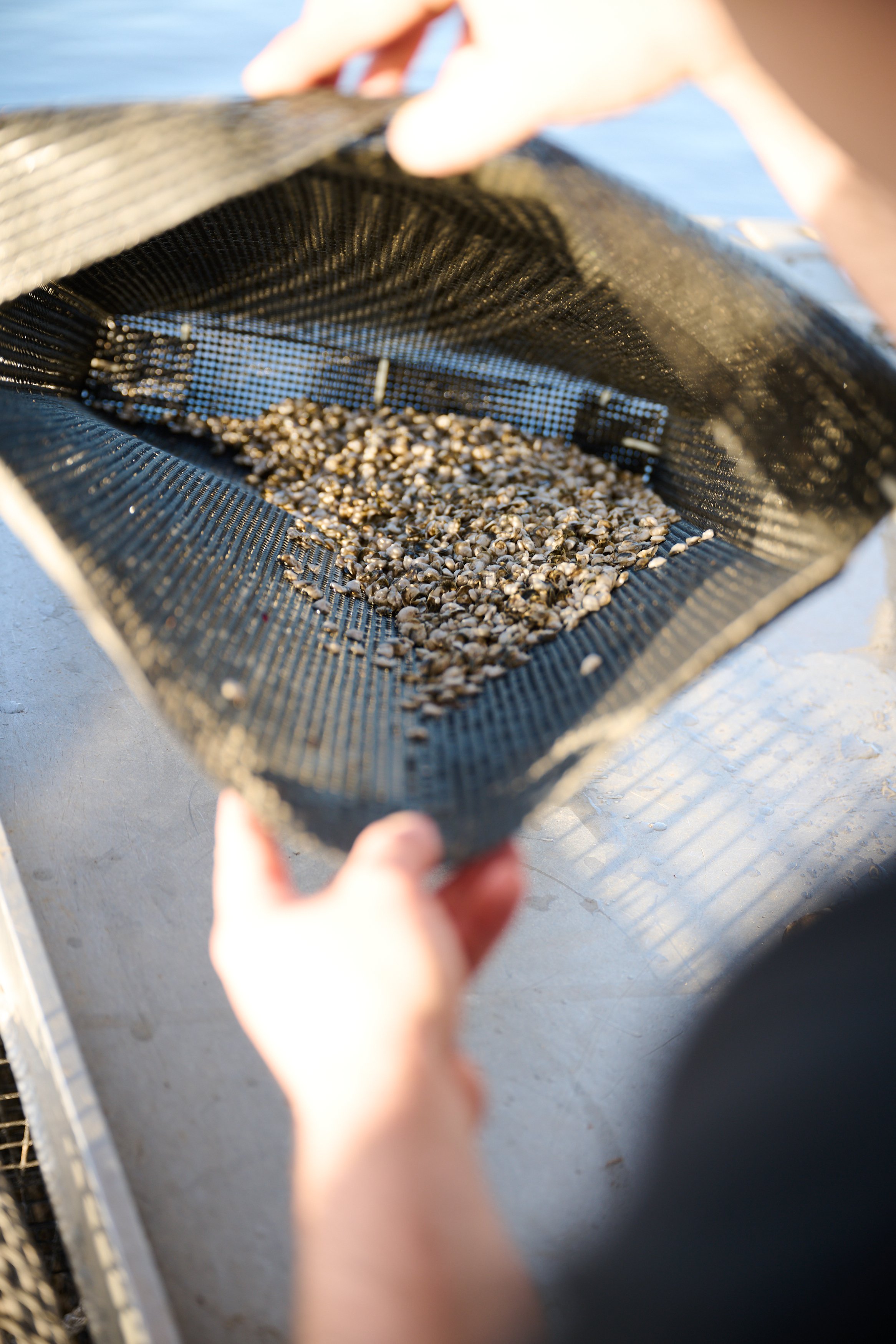Construction of the Mid-Barataria Sediment Diversion is set to begin this year to restore wetlands, but the project will have adverse impacts on the region’s fisheries used by those like Jason Pitre, a member of the United Houma Nation.
Story by Jonathan Olivier | Photos by Jo Vidrine
Jason Pitre piloted his boat out of Bayou Lafourche near Leeville, speeding through marsh towards Little Lake where his oyster fishing grounds sprawl across seven acres. This particular lease goes back three generations in his family, last farmed by his late grandfather Antoine “Whitney” Dardar.
Back then, Dardar caught oysters from his pirogue just like his Houma ancestors had. He used a push pole to navigate the small ponds, canals and the nearby Bayou Rosa, the inspiration for Pitre’s current oyster business, Bayou Rosa Oysters.
As Pitre rode towards Dardar’s old fishing grounds, the wetlands that surrounded him would be unrecognizable to his grandfather’s eyes—Bayou Rosa is wider and degraded, and Little Lake has grown so large that today’s southwest wind lapped up waves that risked swamping Pitre’s 21-foot boat. Large expanses of open water have replaced nearby bayous, ponds and protected inlets, part of more than 2,000 square miles of wetlands that have disappeared in Louisiana since the 1930s. Scientists predict 4,000 square miles more will disappear in the coming decades if nothing is done.
As climate change worsens, hurricanes have become stronger, a reality that forced Pitre to move his family from his hometown of Cutoff to Raceland, a town farther north that is more protected from the Gulf of Mexico. Pitre, a member of the United Houma Nation, said other Native Americans in the region have made the same decision to abandon ancestral lands to escape the dangers of a vanishing coast.
“With each hurricane, people decide this is too much,” Pitre said. “So, the culture in the community leaves one area. It kind of gets dispersed. So over time, our traditions keep dying. As coastal erosion continues and the lands are diminishing, culture and history is slowly kind of washing away, too.”
The Coastal Protection and Restoration Authority (CPRA) has implemented various projects over the years to mitigate further damage to the region’s wetlands, part of the state’s 50-year, $50 billion Coastal Master Plan. This summer the CPRA is beginning construction on a project at a scale never before attempted—the $2.92 billion Mid-Barataria Sediment Diversion. The state will install a structure on the Mississippi River near Ironton in Plaquemines Parish that can open at certain times of the year, allowing 75,000 cubic feet per second of river water and sediment to flow through a 2-mile-long concrete channel into the Barataria Basin.
According to state officials, the project is poised to build 21 square miles of new land in 50 years, which will eventually represent 25 percent of all the wetlands left in the Barataria Basin by 2070. Officials expect the project will be completed in at least five years.
While the idea of building land sounds promising to a coastal inhabitant like Pitre, in an unfortunate twist of fate, the sudden influx of freshwater from the diversion will have “major, permanent, adverse impacts” on the oysters in the Barataria Basin, according to an environmental impact statement released by the Army Corps of Engineers. Sediment will cover oyster fishing grounds while freshwater will make many oyster beds in the basin unproductive. The diversion will also adversely impact brown shrimp populations while it’s projected that 97 percent of the 2,000 bottlenose dolphins in the Barataria Basin will die.
Pitre’s oyster lease is just west of Bayou Lafourche in the Terrebonne Basin, which borders the diversion impact area. Still, he fears he is close enough to the diversion that with an east wind he’ll see some effects, enough so that he’s concerned the future of his business is at risk.
“It's like accepting the fact that you have stage 4 cancer and you're going to die,” Pitre said. “Well, I'm going to at least try to live my life as long as I can.”
The Losses in the Barataria Basin
Between 1974 and 1990, roughly 5,700 acres per year washed away in the Barataria Basin due to a combination of factors: sea-level rise and natural factors like wind and wave erosion, but also the result of human activities. According to a recent study published in the journal Nature Sustainability, levees along the Mississippi River, plus oil and gas wells and canals, are the most prominent reasons why land in the Barataria Basin is vanishing. Drilling and then the canals dug to reach those oil wells caused erosion and subsidence issues. And without the freshwater and sediment that was once regularly deposited by the now contained Mississippi, the marsh continued to wash away without a way to rebuild.
Officials with the CPRA contend that the Mid-Barataria Sediment Diversion will mimic those natural processes that existed before the levees were constructed. Bren Haase, executive director of the CPRA, noted that the Barataria Basin is starved of freshwater and sediment, and the diversion will essentially breathe new life into a dying ecosystem. “A project like this is going to hit reset on that kind of fresh, salt water balance, which is needed,” he said.
Doing nothing is too great of a risk, Haase said, because without the diversion, issues would only be exacerbated. Scientists warn 550 square miles of marsh would disappear in the Barataria Basin in the next 50 years if nothing is done. Less marshland would leave coastal communities more vulnerable to hurricanes. The Barataria Basin would continue to lose productivity—according to the Army Corps’ assessment, half as many oysters and 30 percent fewer shrimp are caught in the basin compared to 20 years ago. Eventually, the oyster and brown shrimp industry would be crippled anyway.
Yet, the Army Corps report also noted that changes to the fishing industry in the basin will occur “decades sooner” with the diversion in place. Due to this reason, George Ricks, a charter boat captain from Plaquemines Parish and president of the Save Louisiana Coalition, is strongly opposed to the Mid-Barataria project. With or without a diversion, the fisheries in the basin will be permanently altered, but for Ricks, the difference is timing.
“If we don't do anything, in 50 years we're going to lose the fisheries anyway,” said Ricks, who has been an outspoken critic of the Mid-Barataria Sediment Diversion for years. “But give us that 50 years. Don't kill us now. And that's exactly what they're going to do with this project.”
Ricks would rather that coastal communities have more time to adapt to the changes occurring in the Barataria Basin. To combat land loss, he would prefer that the state dredge sediment and pump it into the basin to build land and barrier islands. The CPRA already employs this tactic across the coast, including in the Barataria Basin, but the agency doesn’t view it as a long-term, sustainable option. The diversion, on the other hand, would theoretically offer a seemingly endless supply of sediment from the Mississippi River.
Yet, if the idea is to build land, Ricks doesn’t see how 21 square miles of it built in 50 years is a suitable solution. Hurricane Ida, for example, destroyed more than 100 square miles of wetlands essentially overnight, much of it in the Barataria Basin. From his point of view, the expected benefits of the project aren’t worth the cost or the sacrifice that coastal communities will endure. Part of the Barataria Basin falls in Plaquemines Parish, which is home to the largest commercial fishing fleet in the continental United States. He pointed out that 70 percent of the oysters, shrimp, crabs and fish sold commercially in Louisiana comes from the fishermen in Plaquemines Parish.
“The minute they open the gates to this project,” Ricks said, “they're going to put people out of work.”
Finding Ways to Adapt
When the wind calmed and it was safe to put out a few traps in Little Lake, Pitre navigated to a spot on his oyster lease and readied a cage. In a bucket nearby he had hundreds of tiny oysters that he loaded in his cage before tossing it overboard. He uses a method to grow oysters called Alternative Oyster Culture (AOC), which features growing oysters in cages that are submerged yet suspended off the bottom of the marsh, instead of the more traditional method where oysters grow on hard surfaces underwater.
Rather than relying on wild oyster larvae, Pitre purchases thousands at a time that are grown at hatcheries, such as from Triple-N-Oysters that cultivates them miles from the sea in Baton Rouge. Since Pitre’s oyster cages either float or are suspended, there is a small element of mobility that he has which otherwise wouldn’t exist in more traditional operations that rely on underwater structures.
This flexibility means that he might be able to salvage Bayou Rosa Oysters when the diversion opens. He’s eyeing oyster leases that are farther west, which will likely have more stable salinity levels compared to his current lease. He’ll be able to pack up his traps, move to a new lease and have new oyster harvests in a relatively short period of time.
In a future with regular influxes of sediment-laden freshwater from the Mississippi River in the Barataria Basin, traditional oyster beds might be covered in mud. Pitre said since AOC doesn’t require underwater structures, it could provide some people who lose traditional oyster beds with a way to continue catching, as long as the salinity levels are right.
In order to mitigate the damage caused by the diversion to oyster beds and fishing grounds, as well as those who will be impacted by flooding, state officials are setting aside more than $370 million. Haase with the CPRA noted that part of this money will go toward incentives for AOC operations like Pitre’s, as well as opening new oyster fishing grounds wherever possible. “So, a person who might have an oyster bed that's in a place that would become unproductive because of the diversion can go and reseed and put cages down in an area that may be more productive,” he said.
Even still, AOC isn’t a fix to the anticipated problems of the diversion’s freshwater. “No matter how much money you give, if you completely turn the water fresh, I can't function,” Pitre said. “I can't do anything with that.” Plus, for Pitre, leaving his grandfather’s oyster grounds isn’t an easy decision to make. Catching oysters in Bayou Rosa isn’t a business decision, it’s one rooted in his heritage.
With or without a diversion, Pitre recognizes there will continue to be loss—of land, of culture, of language. More hurricanes will wash ashore and more land will vanish. People in his community will continue retreating north. Instead of giving in to feeling powerless, Pitre focuses on the one thing he can control—going out on the water every day and catching oysters.
“I’ll do what I can to keep the industry going because that's our identity,” he said. “We're losing so much culture, the French language, traditions. Fishing is one thing that I'm going to work my hardest to keep alive so that we can survive.”


